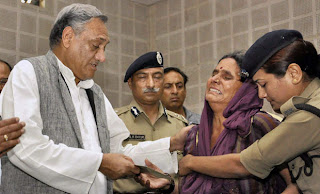One of the sectors that I believe that needs to rework some of its strategies for implementation is the health sector. Most of the national policies for health, specially under the NRHM, though have some specific clauses for mountainous and tribal regions, there are certainly two issues that are not adequately covered in terms of policy or practice.
The first issue is site selection for health facilities. Most health facilities (health sub-centers and Primary Health Centers) stand on lands donated by a local community member. We all know that except in few cases, often there is a need for cajoling someone into offering a plot of required land at no cost or at exceptionally low price because that is what the community is willing to pay collectively for it. So, what do you get for free or minimum cost? The minimum! Often the place is in a very vulnerable location either near a river, or on a slope or in flood prone location, as it happens in deltaic plains. Placing critical life line structures in vulnerable locations is not a right approach. This needs correction. The governments may have have to buy the land or at least a proper land area vulnerability assessment must be done before a plot of land is purchased.
The second issue is the case of vaccine packaging. Those in health sector know that most vials with vaccines for children come in doses of 10. Even in the plains where the population is much higher, it is difficult at times for the health Staff to open a vial because there aren't enough children to whom she can administer the vaccine. In the hills of Uttarakhand and in similar terrains in the country, where the population is still thinner and spread in far off places, this is much more difficult. So, either citing the policy the vaccine is not administered as the health staff cannot open the vial, or, the vaccination gets delayed, and the chances of a child not getting vaccinated increases. There is a serious need for the Ministry of Health and Family Welfare to review the policy on medicine procurement - specifically relating to packaging of vaccine vials. The manufacturers must be clearly instructed to prepare vials of 3 dozes for the hills and 5 dozes for the plains. If there are problems in production of multiple types of bottling, the vaccines can be packed in dozes of 5 per vial across the country. This would reduce wastage, improve vaccination and ensure greater results. Once the size of the vials is changed, the rules can be altered to ensure that even if there is one child, the vial can be opened so that no child is missed!
Prices with pharma companies must be renegotiated as these may try to sell hard the larger vials because they get paid based on the number of doses a vial holds.
 |
| Kedarnath : Satellite images showing pre-disaster & post-disaster situation; In the post-disaster image (right) you can also notice the birth of a new stream! |
